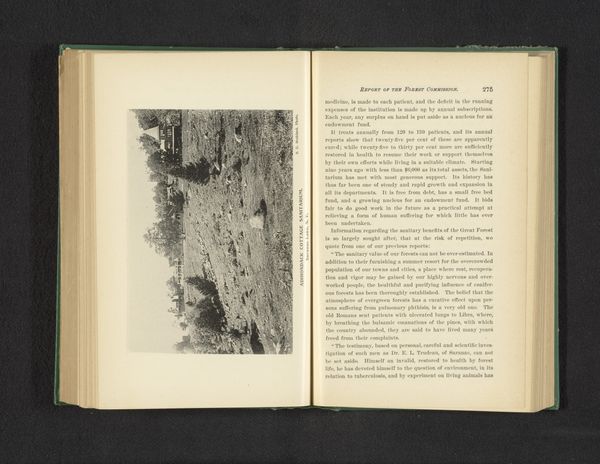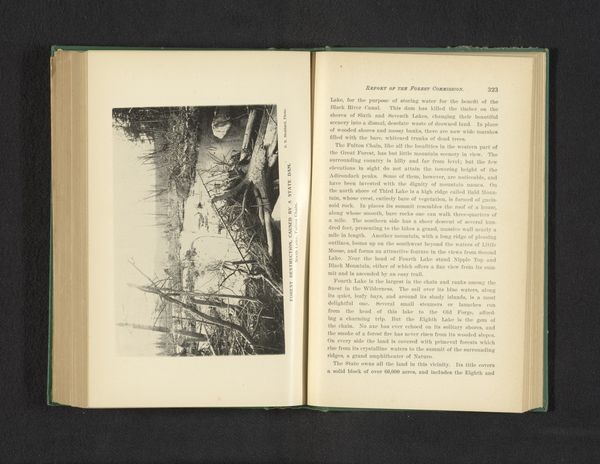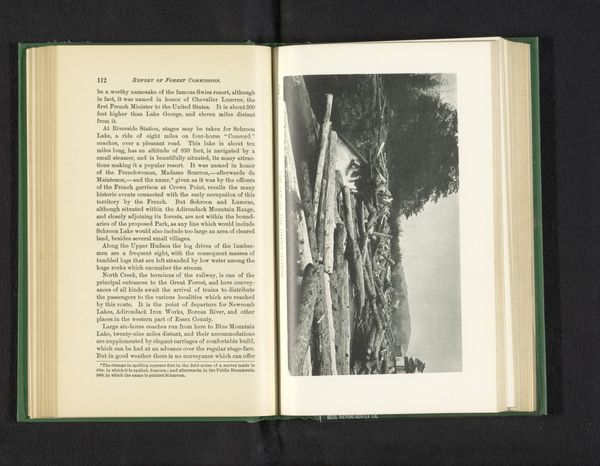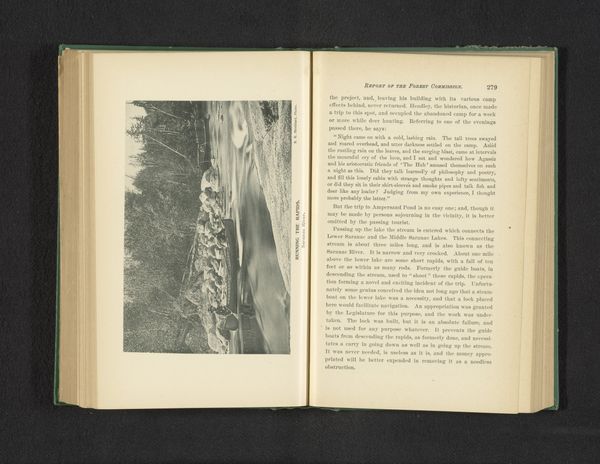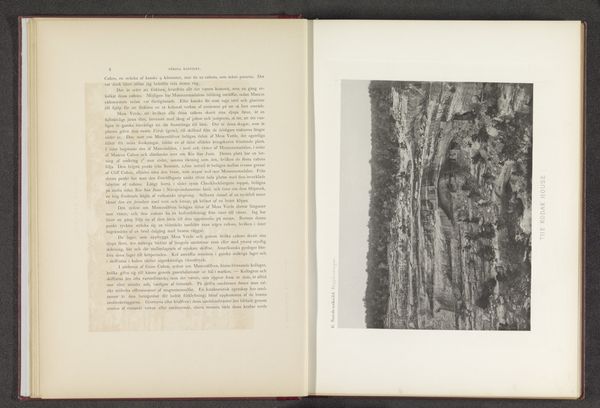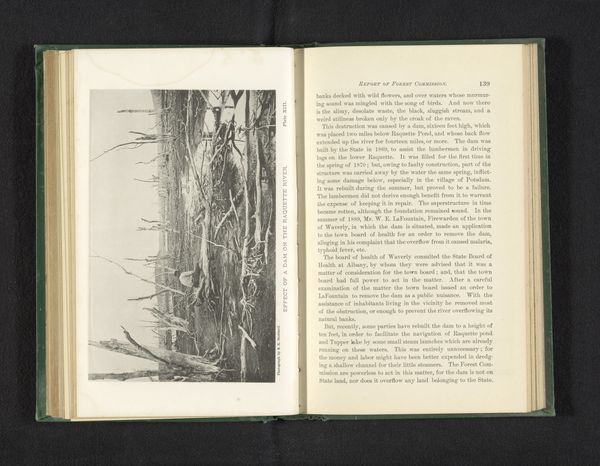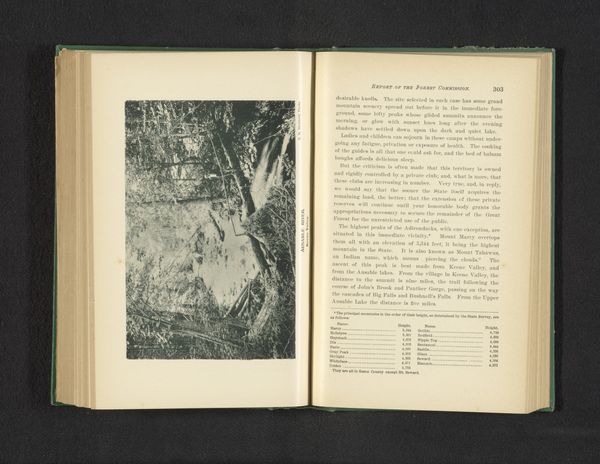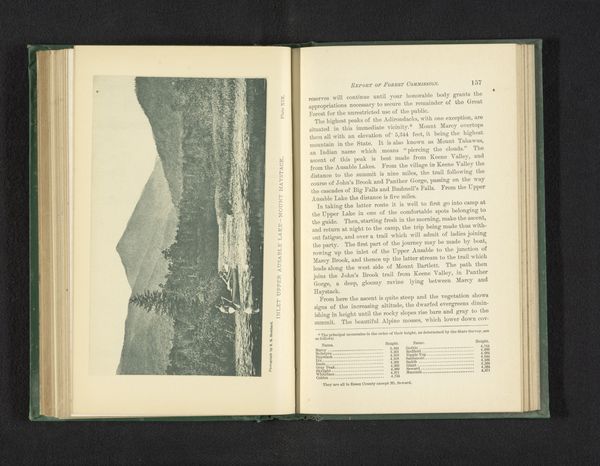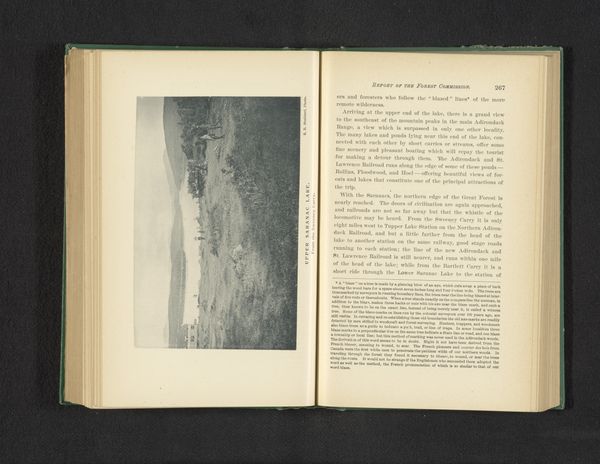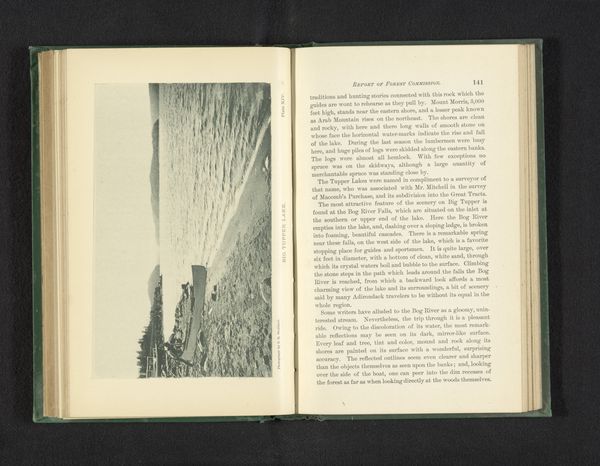
Dimensions: height 102 mm, width 179 mm
Copyright: Rijks Museum: Open Domain
Curator: I'd like to draw our attention to this gelatin-silver print by Seneca Ray Stoddard, created in 1891. It's titled "Log jam on the upper Hudson." Editor: My first impression? Claustrophobia. That dense mass of logs seems like it's choking the river. The monochromatic palette adds to that feeling; it’s stark and unforgiving. Curator: Indeed. Stoddard, aligned with the Hudson River School aesthetic, often photographed the Adirondacks, reflecting a prevailing romantic view of nature. However, images like this reveal a tension. We see the aesthetic appreciation alongside the impact of industrialization on the landscape. The question is, what sociopolitical context do we bring? Do we look at this and see the taming of the wilderness, the march of industry, or do we consider indigenous land rights or ecological impact? Editor: The symbolism here is compelling. The river, often a symbol of life and flow, is literally stopped dead by the logs. It visually speaks of the conflict between natural cycles and human intervention, even though these lumberjacks likely considered themselves aligned with progress and civilization. Are those cut logs icons of exploitation, or simply symbols of another economic cycle of American history? Curator: Precisely. The image becomes a stage for different readings depending on one's perspective. Consider that timber harvesting in the Adirondacks during this period heavily impacted water quality and forest ecosystems. There's a hidden narrative about resource extraction and its social cost, even within the idyllic aesthetic of the Hudson River School. Editor: Yes. But at the same time, these were powerful symbols of progress at the time—almost totemic. And they still retain that primal aspect; the individual logs resemble scattered bones or the chaotic remnants of a fallen behemoth. There is some latent majesty in this chaotic woodscape. Curator: It’s a stark reminder that even representations framed as beautiful or picturesque contain underlying complexities when viewed through lenses of social justice and ecological awareness. Editor: And, looking at Stoddard's choice of this logjam, we are challenged to ponder how deeply our perception of ‘natural beauty’ is constructed.
Comments
No comments
Be the first to comment and join the conversation on the ultimate creative platform.
